Leadership, Opinion, School Community, Teaching Learning in Flocks, Hives and Swarms
Whether you’re a passive or active, engaged or disengaged, voiced or silent, you influence those around you.
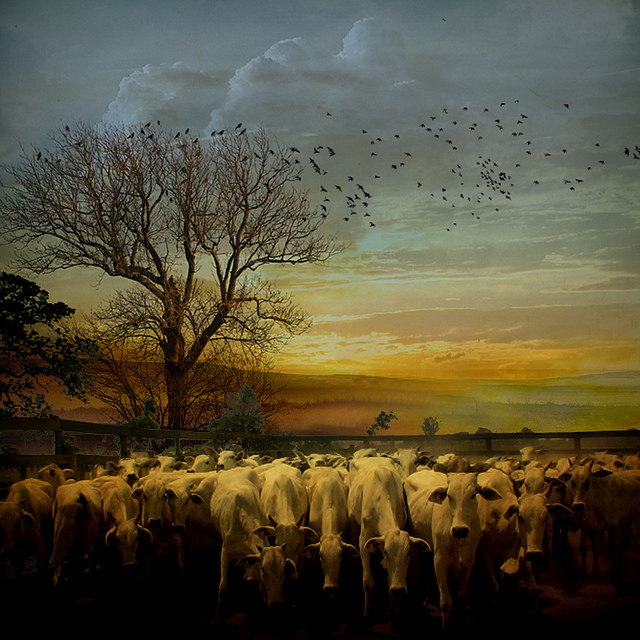
CC photo by: jaci XIII

CC photo by: jaci XIII
You are a lead learner who chooses every day whether to follow, to lead, or to hide in the middle of the flock. Whichever strategy you choose, you are under the influence of your peer group. Do you realize that by your choice to follow, lead or hide, that you are also influencing the actions of your hive colleagues?
In a world of new tools, evolving curriculum expectations and innovative learning strategies, the learning of any single teacher triggers ripple effects that impact the entire learning community. Now more than ever, there is incredible potential for the inspired individual to influence the whole. Using models of group behaviour from the natural world, let’s consider the many ways an individual might participate in and subsequently impact a learning community.
Huddle.
EMBED image: https://www.flickr.com/photos/wwarby/2405378298
include CC attribution
Perhaps the most common strategy to keep safe within a large group, is to move together as a herd. Just as flamingos might huddle together for warmth or protection, and herds of antelope might congregate to protect their weakest members, the herd is a place for followers more than for leaders. While it’s very risky to lead a herd that might be bounding towards a cliff, it’s relatively safe to hide from predators within such a crowd.
What are the risks of moving independent of the herd?
Are there enough benefits to justify staying within the safety of a herd?
Should educators do what they’ve always done, until the entire herd decides it must move to new territory?
What are the risks to those who tread new ground without the company of colleagues?
Run away!
EMBED image: https://www.flickr.com/photos/antichrist/34263361
include CC attribution
Just as we sometimes don’t know how to reach a tipping point for transformation, the once mysterious mass migrations of locusts may hold a key. Recent discoveries by Iain Couzin indicate that swarming may be more of a ‘forced march’ than migration by choice. When resources become scarce, normally vegetarian locusts will seek protein and salt from any available source, including body parts of nearby colleagues!
Are you moving forward because you’re hungry? or because you don’t want to be devoured?
Is it dangerous for teachers to be the ones attempting to lead the way?
Do you have a say in the direction of your professional learning?
Is your learning a threat to others who’d best get out of your way?
Do you know anyone whose strategy for professional learning is “Run away!”?
How do we invite skittish educators to professional learning without frightening them off?
Dance.
EMBED image: https://www.flickr.com/photos/primeval/14198937241/sizes/m/
include CC attribution
Collaborative decision-making is a strategy undertaken by bees and other insects. For bees, whether moving in figure eights, or tilting on angles to the sun, scouts actively promote their ideas through interpretive dance. Returning from field trips, they excitedly share their discoveries by waggling to indicate distance and direction, enticing fellow bees to follow their directions to a new food source. They do the same in communicating suggestions for a new home when the hive needs to relocate. When competing ideas are shared back in the nest, those with contrary opinions stifle the dancing of other bees by headbutting, until the majority reaches consensus, triggering the swarm to relocate.
How do educators share their best ideas?
For what outcomes should educators ‘dance’?
How do our colleagues indicate their support for the ideas being shared?
In what ways do educators ‘headbutt’ the work of fellow teachers?
What strategies are in place to encourage our creatives to keep dancing?
Should consensus be our goal, or should we aspire to uncover a range of dynamic approaches to teaching and learning?
Hide.
EMBED image: https://www.flickr.com/photos/goingslo/2845387466
include CC attribution
The golden shiner is another animal that makes decisions through consensus. Usually these fish live by a simple rule: move quickly when in light; move slowly when in shadow. Recent findings indicate that uninformed individuals in a group of these fish, often hold the key to deciding how the group will respond in a given situation. Surprisingly, it is those with the least interest in an outcome that appear to have the most influence. Uninformed fish can dilute the influence of better informed colleagues, leading the majority to select for the status quo.
Is it possible for education to reach a tipping point where new practices will be adopted?
Should teachers be allowed to hide their opinion or to keep secret their practice?
Why do some of our most innovative teachers hide their creative work?
What makes it so difficult for novel strategies to spread through a learning community?
Flock.
EMBED image: https://www.flickr.com/photos/matthewlowden/3831474407 or https://www.flickr.com/photos/cyanocorax/420632418
include CC attribution
Migratory birds gather in formation in order to ensure safe arrival at a known destination. In North America, Canada Geese fly in a distinct V formation that gives lift to trailing geese, with each taking its turn to lead. They do so with the encouragement of those who ‘HONK’ their support.
In what ways to teachers take turns ‘flying from the front’?
Are we like geese who know where they’re going, or is our destination unknown?
Are there provisions to change course if need be?
Do your PD opportunities rely on one leader, or many?
Must all follow the same path?
Should everyone be required to lead?
MURMURATE
A more dynamic flying formation allows individuals to have more of a say in where the group travels. Starlings prefer to be with other starlings… it’s the first step towards moving in wonderful new directions.
In such a flowing group, individual birds don’t pay attention to any one leader. According to research by Italian physicist Andrea Cavagna and colleagues, starlings pay attention only to the half-dozen birds flying nearby. Following the lead of a small group within a larger collective, the entire population engages in a wondrous aerial ballet. Taking cues from nearby birds, avoiding collision, and experiencing collaborative flow. It’s mesmerizing, organized, and chaotic all at once. With no single bird leading, the entire group evolves.
As part of an engaged network of learners, what is it that brings wonder to your professional life?
What roles do self-organized groups play in influencing the actions of teachers?
As self-propelled individuals sharing our discoveries, what distinct skills and strategies do we learn from one another?
Whether you are a passive or active, engaged or disengaged, voiced or silent… you are influencing those around you. No matter if you choose to be a lead goose, a dancing bee, a rogue starling, or a clever sheep, your connective participation is critical to ensure that our swarm survives, thrives and evolves. As proof that small changes can have significant impacts on a larger system, consider George Monbiot’s description of a ‘trophic cascade’. Though small in number, the re-introduction of wolves to Yellowstone Park caused a river to change course.
As a member of a learning community, your impact is certain to be local; by sharing your thinking and experience, your influence may even go global!
EMBED VIDEO https://vimeo.com/86466357
<p><iframe src=”https://player.vimeo.com/video/86466357?byline=0&portrait=0″ width=”500″ height=”281″ frameborder=”0″ webkitallowfullscreen mozallowfullscreen allowfullscreen></iframe> <p><a href=”https://vimeo.com/86466357″>How Wolves Change Rivers</a> from <a href=”https://vimeo.com/thesustainableman”>Sustainable Human</a> on <a href=”https://vimeo.com”>Vimeo</a>.</p><p>
Learn More:
Iain Couzin, a scientist at Princeton University, is investigating the rules that guide the swarming behaviour of animals.
Alex Pentland, a researcher at the MIT Human Dynamics Lab, is uncovering the keys to how good ideas spread. He has published his findings under the term Social Physi
You are a lead learner who chooses every day whether to follow, to lead, or to hide in the middle of the flock. Whichever strategy you choose, you are under the influence of your peer group. Do you realize that by your choice to follow, lead or hide, that you are also influencing the actions of your hive colleagues?
In a world of new tools, evolving curriculum expectations and innovative learning strategies, the learning of any single teacher triggers ripple effects that impact the entire learning community. Now more than ever, there is incredible potential for the inspired individual to influence the whole. Using models of group behaviour from the natural world, let’s consider the many ways an individual might participate in and subsequently impact a learning community.
Huddle.

CC photo by: William Warby
Perhaps the most common strategy to keep safe within a large group, is to move together as a herd. Just as flamingos might huddle together for warmth or protection, and herds of antelope might congregate to protect their weakest members, the herd is a place for followers more than for leaders. While it’s very risky to lead a herd that might be bounding towards a cliff, it’s relatively safe to hide from predators within such a crowd.
- What are the risks of moving independent of the herd?
- Are there enough benefits to justify staying within the safety of a herd?
- Should educators do what they’ve always done, until the entire herd decides it must move to new territory?
- What are the risks to those who tread new ground without the company of colleagues?
Run away!
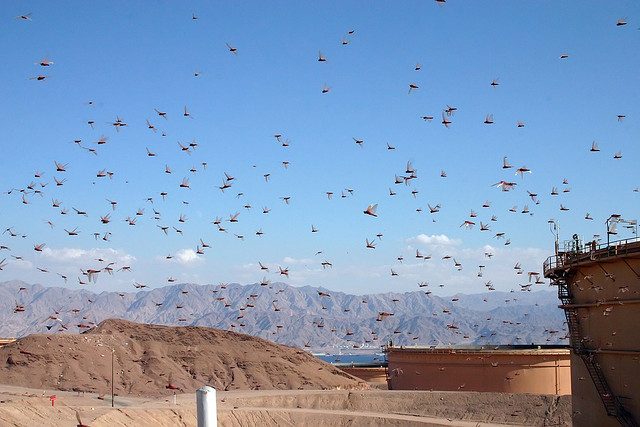
CC photo by: Niv Singer
Just as we sometimes don’t know how to reach a tipping point for transformation, the once mysterious mass migrations of locusts may hold a key. Recent discoveries by Iain Couzin indicate that swarming may be more of a ‘forced march’ than migration by choice. When resources become scarce, normally vegetarian locusts will seek protein and salt from any available source, including body parts of nearby colleagues!
- Are you moving forward because you’re hungry? or because you don’t want to be devoured?
- Is it dangerous for teachers to be the ones attempting to lead the way?
- Do you have a say in the direction of your professional learning?
- Is your learning a threat to others who’d best get out of your way?
- Do you know anyone whose strategy for professional learning is “Run away!”?
- How do we invite skittish educators to professional learning without frightening them off?
Dance.
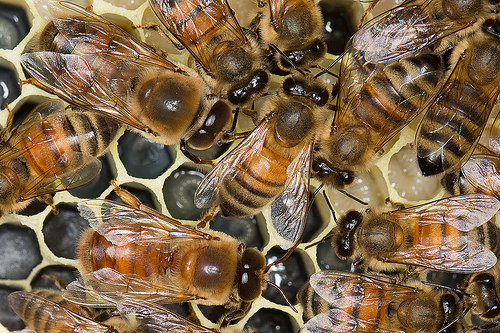
CC photo by: David IIIlg
Collaborative decision-making is a strategy undertaken by bees and other insects. For bees, whether moving in figure eights, or tilting on angles to the sun, scouts actively promote their ideas through interpretive dance. Returning from field trips, they excitedly share their discoveries by waggling to indicate distance and direction, enticing fellow bees to follow their directions to a new food source. They do the same in communicating suggestions for a new home when the hive needs to relocate. When competing ideas are shared back in the nest, those with contrary opinions stifle the dancing of other bees by headbutting, until the majority reaches consensus, triggering the swarm to relocate.
- How do educators share their best ideas?
- For what outcomes should educators ‘dance’?
- How do our colleagues indicate their support for the ideas being shared?
- In what ways do educators ‘headbutt’ the work of fellow teachers?
- What strategies are in place to encourage our creatives to keep dancing?
- Should consensus be our goal, or should we aspire to uncover a range of dynamic approaches to teaching and learning?
Hide.
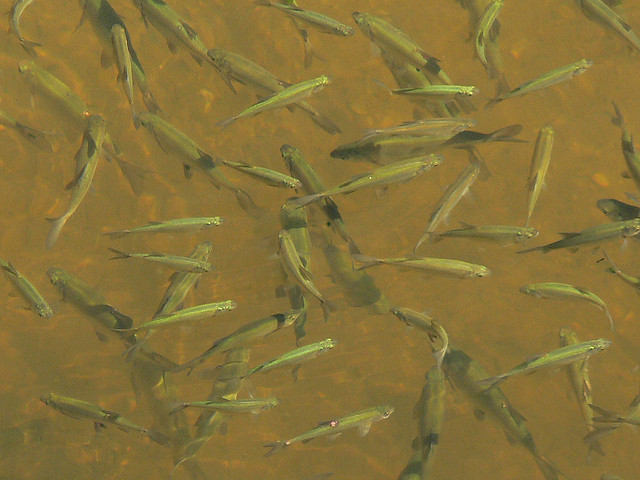
CC photo by: Linda Tanner
The golden shiner is another animal that makes decisions through consensus. Usually these fish live by a simple rule: move quickly when in light; move slowly when in shadow. Recent findings indicate that uninformed individuals in a group of these fish, often hold the key to deciding how the group will respond in a given situation. Surprisingly, it is those with the least interest in an outcome that appear to have the most influence. Uninformed fish can dilute the influence of better informed colleagues, leading the majority to select for the status quo.
- Is it possible for education to reach a tipping point where new practices will be adopted?
- Should teachers be allowed to hide their opinion or to keep secret their practice?
- Why do some of our most innovative teachers hide their creative work?
- What makes it so difficult for novel strategies to spread through a learning community?
Flock.
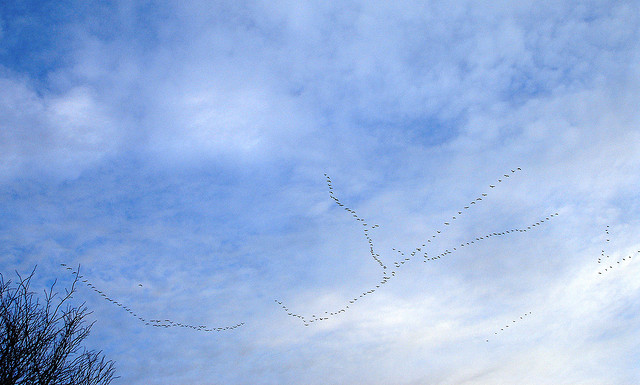
CC photo by: Cyndy Simms Parr
Migratory birds gather in formation in order to ensure safe arrival at a known destination. In North America, Canada Geese fly in a distinct V formation that gives lift to trailing geese, with each taking its turn to lead. They do so with the encouragement of those who ‘HONK’ their support.
- In what ways to teachers take turns ‘flying from the front’?
- Are we like geese who know where they’re going, or is our destination unknown?
- Are there provisions to change course if need be?
- Do your PD opportunities rely on one leader, or many?
- Must all follow the same path?
- Should everyone be required to lead?
Murmurate.
A more dynamic flying formation allows individuals to have more of a say in where the group travels. Starlings prefer to be with other starlings… it’s the first step towards moving in wonderful new directions.
In such a flowing group, individual birds don’t pay attention to any one leader. According to research by Italian physicist Andrea Cavagna and colleagues, starlings pay attention only to the half-dozen birds flying nearby. Following the lead of a small group within a larger collective, the entire population engages in a wondrous aerial ballet. Taking cues from nearby birds, avoiding collision, and experiencing collaborative flow, it’s mesmerizing, organized, and chaotic all at once. With no single bird leading, the entire group evolves.
- As part of an engaged network of learners, what is it that brings wonder to your professional life?
- What roles do self-organized groups play in influencing the actions of teachers?
- As self-propelled individuals sharing our discoveries, what distinct skills and strategies do we learn from one another?
Whether you are a passive or active, engaged or disengaged, voiced or silent… you are influencing those around you. No matter if you choose to be a lead goose, a dancing bee, a rogue starling, or a clever sheep, your connective participation is critical to ensure that our swarm survives, thrives and evolves. As proof that small changes can have significant impacts on a larger system, consider George Monbiot’s description of a ‘trophic cascade’. Though small in number, the re-introduction of wolves to Yellowstone Park caused a river to change course.
As a member of a learning community, your impact is certain to be local; by sharing your thinking and experience, your influence may even go global!
Learn More:
Iain Couzin, a scientist at Princeton University, is investigating the rules that guide the swarming behaviour of animals.
Alex Pentland, a researcher at the MIT Human Dynamics Lab, is uncovering the keys to how good ideas spread. He has published his findings under the term Social Physics.
This blog post is part of CEA’s focus on the state of Teacher PD in Canada, which is also connected to Education Canada Magazine’s Teachers as Learners theme issue and The Facts on Education fact sheet, What is Effective Teacher Professional Development? Please contact info@cea-ace.ca if you would like to contribute a blog post to this series.
Meet the Expert(s)
Rodd Lucier
Teacher, Speaker, Collaborator
As a teacher, consultant, and speaker, Rodd Lucier regularly challenges grassroots educators to consider alternative models for teaching and learning and to co-create solutions to everyday educational challenges. He is the founder of Unplug’d Canadian Education Summit (http://unplugd.ca) and regularly shares his ideas about education and emerging technologies on his blog, The Clever Sheep at http://thecleversheep.com
Read More






